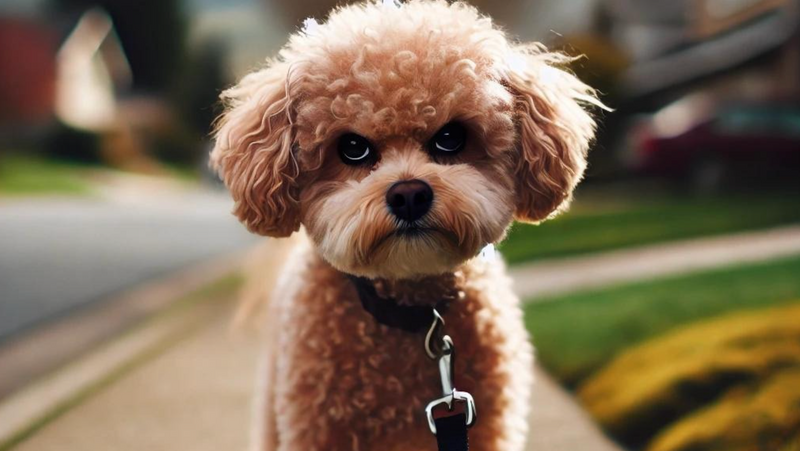
How do you calm a reactive dog?
If you’ve ever had a dog that barks, lunges, or becomes overly excited in certain situations, you’re not alone! A reactive dog can be challenging to handle, but it’s important to remember that they aren’t behaving this way to be “bad” or “difficult.” Reactivity is often a response to fear, stress, or overstimulation. The good news? With patience and the right approach, you can help your dog stay calm and confident, even in situations that previously caused them distress.
In this blog, we’ll explore what it means for a dog to be reactive and how you can help soothe their nerves.
What Is a Reactive Dog?
A reactive dog is one that overreacts to certain triggers in their environment. This could be anything from other dogs, unfamiliar people, loud noises, or even moving objects like bikes or cars. The key word here is “overreact”—while most dogs may show mild interest or caution around these things, reactive dogs often respond with intense behaviours like barking, lunging, or growling.
Reactivity can stem from a variety of reasons, such as fear, lack of socialisation, or even excitement. The goal is to help your dog feel safe and confident, so they don’t feel the need to react in these situations.
1. Understand Your Dog’s Triggers
The first step in calming a reactive dog is understanding what triggers their behaviour. Does your dog react to other dogs while on walks? Or maybe they get worked up when guests come to the house? Identifying these triggers allows you to plan ahead and create a more controlled environment for your dog.
Keep a mental (or physical!) note of when and where your dog tends to react. This will help you avoid overwhelming them and give you a better idea of how to approach each situation.
2. Stay Calm and Patient
Your dog takes cues from you, so if you’re stressed or anxious, they’ll likely pick up on those emotions. It’s important to stay calm, even when your dog starts to react. Yelling or pulling harshly on the leash can escalate their reactivity rather than calm them down.
Instead, take a deep breath and remain composed. Speak to your dog in a soothing tone, and focus on guiding them through the situation with patience. Remember, they’re not trying to misbehave—they’re simply overwhelmed.
3. Use Positive Reinforcement
Positive reinforcement is one of the most effective tools for calming a reactive dog. Rather than punishing your dog for reacting, reward them when they remain calm or show signs of improvement. For example, if your dog stays relaxed when another dog passes by, give them a treat, praise, or a favourite toy.
This helps your dog associate the presence of triggers with positive experiences, gradually reducing their stress. Over time, they’ll learn that staying calm leads to rewards, making it easier for them to control their reactions.
4. Create Distance from Triggers
If you know your dog reacts to certain things, create distance between them and the trigger whenever possible. For example, if your dog tends to react to other dogs during walks, cross the street or take a different route when you see another dog coming.
This gives your dog space to feel safe without being too close to what makes them uncomfortable. Over time, as your dog becomes more comfortable, you can gradually decrease the distance while continuing to reinforce calm behaviour.
5. Teach Focus and Obedience Commands
Training your dog to focus on you in stressful situations is incredibly helpful. Commands like “watch me,” “sit,” or “stay” can redirect their attention away from the trigger and back to you. This helps break the cycle of reactivity and teaches your dog that they can look to you for guidance.
Start practicing these commands in calm environments, then gradually introduce more challenging situations as your dog becomes more comfortable. Consistency is key—practice regularly to build your dog’s confidence.
6. Desensitisation and Counterconditioning
Desensitisation involves gradually exposing your dog to the trigger in a controlled way, starting at a level where they feel comfortable. Over time, you increase the exposure, but only as long as your dog remains calm. The goal is to help your dog get used to the trigger without reacting.
Counterconditioning pairs the trigger with something your dog loves, like treats or praise. For example, if your dog is reactive to other dogs, start by rewarding them every time they see a dog from a distance without reacting. Over time, they’ll begin to associate the presence of other dogs with positive experiences.
7. Use Calming Aids
There are many products designed to help calm reactive dogs, from calming treats to anxiety wraps like the ThunderShirt. These can be helpful tools for dogs who need a little extra support, especially in stressful situations.
Some dogs also benefit from calming supplements, which can promote relaxation and reduce anxiety. Always consult your vet before introducing new products to ensure they’re right for your dog.
8. Seek Professional Help
If your dog’s reactivity is severe or you’re struggling to make progress, consider seeking help from a professional dog trainer or behaviourist. These experts can assess your dog’s behaviour and create a personalised training plan to address their specific needs.
Sometimes, reactive behaviour stems from deep-rooted fears or anxieties, and professional guidance can make a world of difference. Don’t hesitate to reach out for help if you need it—your dog’s well-being is worth it!
Final Thoughts: Patience and Consistency Are Key
Calming a reactive dog takes time, patience, and lots of positive reinforcement. It’s not an overnight process, but with consistent training and support, your dog can learn to stay calm and confident, even in the face of their triggers.
Remember, your dog looks to you for reassurance. By staying calm, understanding their needs, and using positive methods, you can help your furry friend feel safe and secure in any situation.




 Scooch health
Scooch health